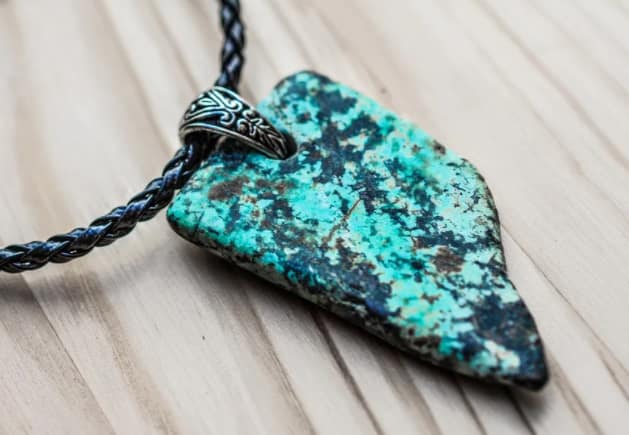
Turquoise is a truly attractive blue-green gemstone that has been prized for centuries for its beautiful color, healing properties, and as a bringer of happiness and joy. Turquoise is the main gemstone used by psychics to enhance their ability. As I observed from the psychics near me, many of them used this precious spiritual gemstone. This beautiful blue-green gemstone has been mined in ancient times, and the ancient Egyptians also mined it in much of Sinai.

The Spiritual Use of Turquoise
As mentioned, this gemstone is believed to bring huge spiritual energy. Aside from being worn as a unique fashion of psychics, many psychics use this gemstone to open and strengthen the connection to the spirit world. Hence, it is believed to increase psychic sensitivity. Many common people also wear this gemstone as they believe it can protect them from bad luck and negative energy. Furthermore, many believe that it is said to boost creativity and serenity in the people who wear it.
The History of Turquoise
The Aztecs used this bead as an inlay in the creation of mosaic poles, such as for ceremonial masks. Connecting with the spirit world also enhances psychic sensitivity. It is said to improve the creativity and calmness of the wearer. If given as a gift by someone you love, this turquoise will protect you from bad luck and unwanted energies. During the Middle Ages in Europe, it was believed that turquoise could change color when its owner was ill or in danger and that the pearl would return to its original color when the danger had passed. It was also thought to protect the wearer from poisoning, as it could become damp and discolored if the wearer was poisoned. Poisoned because of the changes he observed in his turquoise diamonds.
The Value of Turquoise
How can you determine the value of turquoise? As with many gemstones, it is estimated by the thickness of the color of that stone and its hardness. It needs to be hard, as being soft and sterile, the color of this rock will likely fade and not be able to withstand the daily wear and tear that it may undergo when placed in a piece of jewelry.
Sometimes black veins are running through the pearl, which is called a “spider web matrix”. This “spider’s web” matrix is highly valued in some areas of the world, such as the Far East and the Southwestern United States, but it is not as well received in other areas where people prefer their turquoise to be completely vein-free and flawless.
Being a phosphate mineral, it should not come into contact with hairspray, perfume, or makeup if possible, as these can attack the surface of the gem and cause discoloration. Wear all makeup and perfume until you wear your turquoise jewelry, and when you take it off, gently wash it with a soft cloth and place it in a box by itself so that it won’t be damaged by some of the harder stones in your collection.
The Treatment of Turquoises
Turquoise is often treated to improve both its color and durability. Often, the simple fact that the gemstone has been treated is not obvious, and a professional gemologist can examine it to find out what treatments it has undergone. The oldest treatment of turquoise, dating back to the earliest times, is the delicate waxing and oiling of the pearl.
This process enriches the luster and color of this stone, but oiled and waxed turquoise can “sweat” due to heat and then, over time, can form a white flower inside. A more contemporary treatment would be to “glue” the rocks to vinyl or glass. Low-quality turquoise, which would otherwise be unsellable, soaks up all the water in the plastic or glass under tension, which creates a wetting effect on the pearl, making it much harder and more usable.



